Louis Hofmann Land of Mine
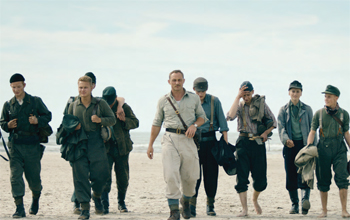
Louis Hofmann Land of Mine
Cast: Roland Møller, Louis Hofmann, Joel Basman, Emil Belton, Oskar Belton
Director: Martin Zandvliet
Rated: MA
Running Time: 101 minutes
Synopsis: Few films detail the immediate aftermath of conflict and occupation from the Second World War. After six years of war and terror the lines between right and wrong had been eradicated. Land of Mine, the stunning new film from Danish director Martin Zandvliet,
exposes the previously hidden story of Denmark's darkest hour. In the days following the surrender of Nazi Germany in May 1945, German POWs held in Denmark were put to work by the Allied Forces. With minimal or no training in defusing explosives, they were sent to remove in excess of two million of their own landmines from the Danish west coast. During this process, more than half of them were killed or severely wounded. Zandvliet sheds light on this historical tragedy as the entry point to a story that involves love, hate, revenge and reconciliation.
These young German POWs Sebastian, Helmut, Ludwig, twins Ernst and Werner, and Wilhelm have confusion, fear and defeat in their eyes. Scornful of the Germans for their fiveyear occupation of his country, and with the intent on punishing what is left of the Nazi regime, the bullish Sergeant Rasmussen (Roland Møller) marches his squad out on the dunes each day to prod for mines. This seemingly endless task quickly becomes carnage; and even Rasmussen grows conflicted in his feelings and intent toward his young prisoners.
Land of Mine is about the aftermath of war; but more so, about humanity. Zandvliet finds equally compelling material for his tale of comradeship, survival, and unexpected friendships. It questions the existence of the inherent evil that could exist in us all. But is it
ever possible to show sympathy for those who represented the Nazi terror?
Land of Mine
Release Date: March 30th, 2017
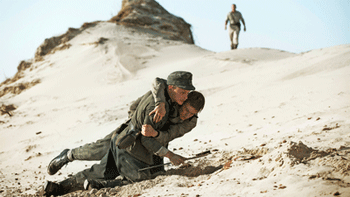 About The Production
About The Production
Research Behind The Film
The Geneva Convention of 1929 forbids forcing Prisoners of War to carry out hard labour or dangerous work. However, there is evidence of British and Danish commands deliberately changed the wording of the text from 'prisoners of war" to 'voluntarily surrendered enemy personnel" in order to sidestep the rules of the convention. Many of the German soldiers ordered to defuse more than two million mines along the Danish coastline were mere boys - only 15-18 years of age.
To this day, the events surrounding the demining of the Danish beaches are considered taboo in modern Danish history. The five-month demining process claimed more human lives than the entire length of German occupation in Denmark.
The idea of using German prisoners of war to carry out the dangerous demining task came from British command, but was carried out with no objections from the Danish administration. The Danish Brigade was in charge of supervising and handling the operation.
Historical facts:
From 1942 to 1944 Nazi Germany built the so-called Atlantic Wall in anticipation of an Allied invasion from Great Britain - an extensive system of coastal defence and fortifications along the coast of continental Europe and Scandinavia. Landmines were planted along great swathes of the West Coast of Denmark
After the capitulation of Nazi Germany, the British liberation forces offered the Danish government the opportunity to enlist German POWs to defuse mines along the length of the Danish Western coastline
The German POWs were neither educated nor equipped for this task and many belonged to the so-called Volkssturm, a national militia set up by Hitler towards the end of the war to conscript those not already serving for the German forces. Many were very young or old. The youngest were 13 years old 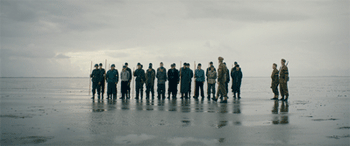 To force German POWs to defuse mines was a violation of the 1929 Convention relating to the Treatment of Prisoners of War prior to the amendment to the Geneva Conventions of 1949. By calling the German POWs -voluntarily surrendered enemy personnel' British and Danish commands bypassed the rules of the Convention
To force German POWs to defuse mines was a violation of the 1929 Convention relating to the Treatment of Prisoners of War prior to the amendment to the Geneva Conventions of 1949. By calling the German POWs -voluntarily surrendered enemy personnel' British and Danish commands bypassed the rules of the Convention
The work began on Saturday 5 May 1945 and was completed on Thursday 4 October 1945
According to historian Thomas Tram Pedersen, the exact number of the losses will never be known due to the chaos of the first months of peace. There are discrepancies between the Danish and the German records
An estimated 2.600 men were forced to work
Half of them were killed or injured
1.402.000 mines were removed from 11 May to 4 October 1945 according to military documents
The relationship between the German POWs and the local population were bad – the prive for five years of occupation under Nazi rule. There was no proper accommodation provided and food was constantly scarce
In 64 countries around the world, there are an estimated 110 million undetonated landmines still lodged in the ground
Since 1975, landmines have killed or maimed more than one million people
On average, 10 people die every day due to landmine blasts 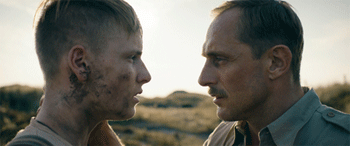 Even with training, mine disposal experts expect that for every 5,000 mines cleared, one worker will be killed and two workers will be injured by accidental explosions
Even with training, mine disposal experts expect that for every 5,000 mines cleared, one worker will be killed and two workers will be injured by accidental explosions
The only way to deactivate a landmine is by individual removal at a cost of US$ 300– 1000 per mine according to the United Nations.
About The Production
'We were focused on two practical paths throughout our development of the entire production framework. We wanted to make sure the film could be realized in a credible fashion, but at the same time, avoid most of the cumbersome production issues of a period film. This was something we took into consideration from the very beginning. Our approach was to use as few locations as possible, thus avoiding the big challenges regarding the historical setting," explains producer Mikael Rieks.
The producers worked with the Oksbøl camp (NATO) under the Danish armed forces, where the events historically took place. 'They were all completely on board and very positive about the project. From the get-go, we had nothing, but fantastic support for the story," says Mikael Rieks about their collaboration with the Royal Danish Army. In their extensive research of the history of the west coast of Denmark, the location scouts only found a few possible locations – in an area with only few holiday homes and no wildlife preservation. Adding to this challenge was the fact that the beaches on the west coast are littered with old, worn-down German concrete bunkers and -pillboxes', most of which have keeled over or are half submerged under water.
In addition, the producers spoke to several mine-clearing businesses around Europe. The Skallingen peninsula had in recent years undergone a complete sweep for mines. This operation was carried out by a Danish demining company, which proved very helpful in creating replica mines as well as providing a lot of military and technical equipment from the period such as minesweepers, military trucks, and jeeps.
The VFX were a combination of SFX and CGI, which required a great deal of preparation, also on location - explosions and stunts were fully storyboarded to ensure the team made the right choices. The fact that the production was working out of the Oksbøl Camp was an advantage in this regard. Thanks to their access to army experts on explosives and mines, combined with the achievements of visual effects team, stunt coordinators and CGI consultants, Land of Mine has a natural and authentic feel.
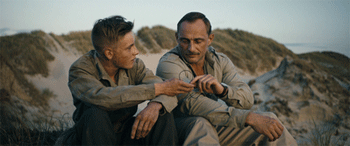 For a large part of the film, the spoken language is German. This was a challenging aspect relating to many facets of the production. Sound and editing were just two of these aspects. Director Martin Zandvliet took some advanced German lessons every week during preproduction.
For a large part of the film, the spoken language is German. This was a challenging aspect relating to many facets of the production. Sound and editing were just two of these aspects. Director Martin Zandvliet took some advanced German lessons every week during preproduction.
A vocal coach supervised the dialogue in German, but also the dialects of the boys. 'It was important for the story that the boys did not come from the same region in Germany. The differences in dialect/local tongue was especially important for Sebastian and Helmut who incidentally both came from Hamburg but spoke in character very differently because one had a rich family background and the other came from a working class family," explains German producer Malte Grunert.
The film was shot in six weeks. For most of the shoot, the story was told using a handheld steady camera.
Director's Statement
My intention was to reveal a story based on a historical subject matter that is rather shameful for Denmark. Most historians have so far avoided the subject, perhaps understandably so.
I was not assigning blame or pointing fingers; it was just interesting to make a movie that doesn't always look at the Germans like monsters. It's the story of a military truck filled with young German boys, who were sacrificed in the aftermath of the Second World War. However, in the end, it is really just a movie about humans. It takes you on a journey from hate to forgiveness. My intention was to create a relevant story and let the audience experience the power of fear, hope, dreams, friendships and the struggle for survival through this handful of characters.
The British offer of German POWs for demining operations placed the Danish government in a political dilemma. Declining the offer would have been a very unpopular decision both in the eyes of the Danish public and the surrounding allied nations. Denmark as a nation still had a somewhat blemished reputation following the war. And the British were the unspoiled heroes – the liberators of Denmark. Nevertheless, by going along with forcing young German POWs to demine the Danish coastline, it could be argued that Denmark committed a war crime.
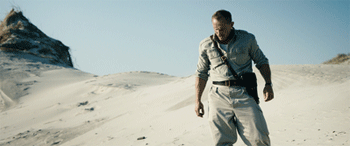 I wanted this realistic drama to be set in an idyllic, beautiful universe distraught by rough concrete bunkers and daily mine detonations. The summer, the sand, the dunes, the warm weather and the water were a constant reminder of the idyllic life that once was, and the life that would once more rise out of the ashes. Along with the thousands of mines, explosions, death and sorrow, these elements hold us in the clutch of the aftermath war.
I wanted this realistic drama to be set in an idyllic, beautiful universe distraught by rough concrete bunkers and daily mine detonations. The summer, the sand, the dunes, the warm weather and the water were a constant reminder of the idyllic life that once was, and the life that would once more rise out of the ashes. Along with the thousands of mines, explosions, death and sorrow, these elements hold us in the clutch of the aftermath war.
Working with my wife cinematographer Camilla Hjelm Knudsen who shot the film, we were heavily influenced by the look of films from the 60s. It was about creating the right mix of poetry and darkness. The setting needed to be as beautiful as possible to cope with the horror you are also watching unfold on screen.
Most of the film takes place in daylight in contrast to the darkness shown through our characters. I am inspired by people such as David and Albert Maysels. The way the Maysels brothers filmed their subjects was so vulnerable and sensuous that you could not help feeling the presence of their characters. It is a beautiful and rare thing when that happens. Intellectual analysis never kicks in. This only happens when you are fully engaged with the human beings you are watching and in the feeling of the scene.
The idea was to create a sense of life. Not that I wanted the camera to draw attention to itself, but I did want the audience to constantly be able to follow the actors. Characters have always interested me more than plot.
We were lucky enough to have amazing casting directors who helped us avoid an 'actors look'. We cast all the boys for all the roles - no one knew which role they got and were selected for. I chose the ones that I felt were the most natural for the roles. These boys were new actors, amateurs if you will. The nice thing about that is you can model and mould them to what you need, craft their performance to what you are looking for. This was even the case for the male lead role as it was Roland's first lead role in a film.
A general consensus exists among filmmakers that people have to be beautiful, in a sense where beauty means having no flaws. But I have always thought that each human being is most interesting, when you can see the human being's history. It is okay to know somebody's angst, see his scars and feel his demons. I was not looking to simply display a lot of ugliness, but I do think that the ugliness tells us more about who we are as human beings than anything else.
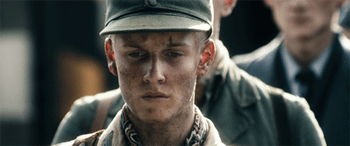 It is a very humane film that not only explores the beauty of darkness, but also tries to find out who these German boys were. We share their hopes and pray for their continued survival through this nightmare. We must believe that they once more can become human beings even though we disapprove of the violent regime of which they were a part. In a way we ask the question – 'Is it even possible to show sympathy for individuals who represent the terror of the Nazi regime?"
It is a very humane film that not only explores the beauty of darkness, but also tries to find out who these German boys were. We share their hopes and pray for their continued survival through this nightmare. We must believe that they once more can become human beings even though we disapprove of the violent regime of which they were a part. In a way we ask the question – 'Is it even possible to show sympathy for individuals who represent the terror of the Nazi regime?"
They say that a great drama largely depends on the magnitude of the bad guy. As far as I am concerned, it is therefore the man who forces them to their deaths who is the true representative of the film and of the hate. Along with the boys, we therefore follow their keeper, the sergeant Carl. For Carl, the monsters transform into human beings.
For me, Land of Mine tells an important and humane story, which is a largely unknown story to the majority of Danes. It has been kept out of sight. Conveniently forgotten. Repressed. It is a film about revenge and forgiveness. About a group of boys forced to do penance on the behalf of an entire nation.
Land of Mine
Release Date: March 30th, 2017
MORE
- Mission: Impossible Fallout
- Glenn Close The Wife
- Allison Chhorn Stanley's Mouth Interview
- Benicio Del Toro Sicario: Day of the Soldado
- Dame Judi Dench Tea With The Dames
- Sandra Bullock Ocean's 8
- Chris Pratt Jurassic World: Fallen Kingdom
- Claudia Sangiorgi Dalimore and Michelle Grace...
- Rachel McAdams Disobedience Interview
- Sebastián Lelio and Alessandro Nivola...
- Perri Cummings Trench Interview



